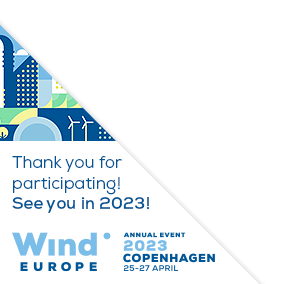Posters
Siblings:
ProceedingsProgrammeSpeakersPostersContent PartnersGlobal Markets TheatreWindTalks for InnovationProgramme Committee & Abstract ReviewersSpeaker's DashboardCome meet the poster presenters to ask them questions and discuss their work
Check the programme for our poster viewing moments. For more details on each poster, click on the poster titles to read the abstract. On Wednesday, 6 April at 15:30-16:15, join us on Level 3 of the Conference area for the Poster Awards!

PO138: Using digital twins to optimize offshore windfarm resource assessment and design based on proven offshore oil and gas digital design methodologies.
Darrell Knight, Executive Vice-President Strategy and Innovation, FutureOn
Abstract
Over the last 5 years, as they sought ways to drive new efficiencies and to lower offshore project costs, the oil and gas industry rapidly adopted a more digital mindset. A similar drive for greater efficiencies in Offshore Wind is emerging, and applying the proven technology and digital methods from their ongoing transformation would support better decision making by project stakeholders from early concept stages through engineering. The ever-increasing number and complexity of datasets and the underlying engineering parameters that are considered when designing and offshore wind farm poses a risk to the project’s decision making and schedule. These datasets include the subsea bathymetry, subsea infrastructure locations, metocean conditions, geotechnical and geohazard surveys, marine traffic routes, and bird migration pathways. The vast collection of engineering and economic parameters for wind turbines, cables, and other infrastructure components that make of the entire project to be considered by the project. Combining these datasets and technical parameters into a single geospatially accurate data model allows accurate modelling of the offshore wind farm performance across multiple domains (CAPEX/OPEX, LCOE and sustainability goals). Adopting a proven digital twin will provide a comprehensive framework to support complex decision making during the early project phases. Multiple what-if scenarios can be modelled using the latest data sets and the best-case solution can be realized prior to major capital investment. The resultant digital twin can then evolve to support smart operations, real-time measurement and as a basis for applying machine learning algorithms for predictive maintenance support.










Follow the event on: